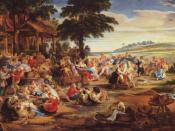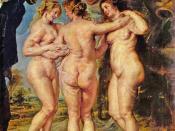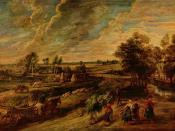Peter Paul Rubens
1577-1640
Peter Paul Rubens was a man of enlightenment. He was the most sought-after painter in northern Europe during the seventeenth century, he was also a diplomat, linguist, and scholar. His dynamic, emotional style with its rich texture, vivid color, and lively movement has influenced Western art to the present day.
Peter Paul Rubens was born in fact from parents in exile, forced by their faith to abandon Antwerp in order to flee the Catholic repression instrumented by the Spanish. The persecution rages everywhere in a bloody way: in France with the slaughter of the Huguenots, tragically known as " Saint Bartholomew's Day Massacre" of 1572. But if in Paris Henry the forth sanctions freedom of worship with the Edict of Nantes in 1598, in Flanders the order is picked up by the Archdukes Alberto and Isabella, in whose service Rubens will be from 1610. Religious intolerance re-explodes in 1618 with the Thirty Years War, which upsets Europe until its epilogue in 1648, just eight years after the death of the painter, who in his role as a diplomat had done his utmost for a peaceful resolution to the conflict (Zeri, pg.
40).
Rubens education, before being artistic, is literary. The painter is trained on the humanistic texts, and the teaching of this culture informs not only his pictorial work, but his entire life. He is a collector of antiques, passionate reader of the Greek and Latin Classics, and diplomat for important families of the age. Counselor and courtier, he is the owner of a Florentine studio that numbers some of the most famous painters of the age. Finally, he is a writer, and in addition to his book on sculpture, De Imitatione Statuarum , he writes Palaces of Genoa in fluent Italian (Zeri,.pg18).
Rubens, while...


